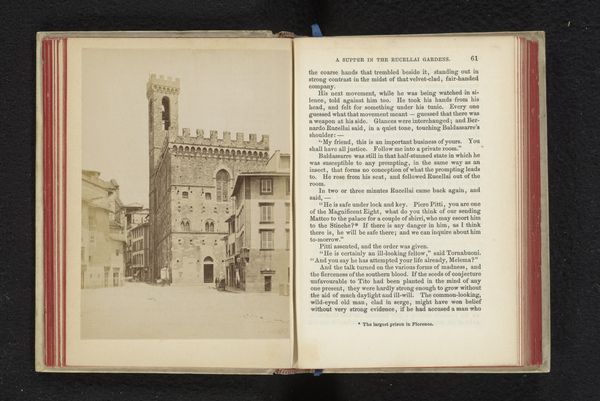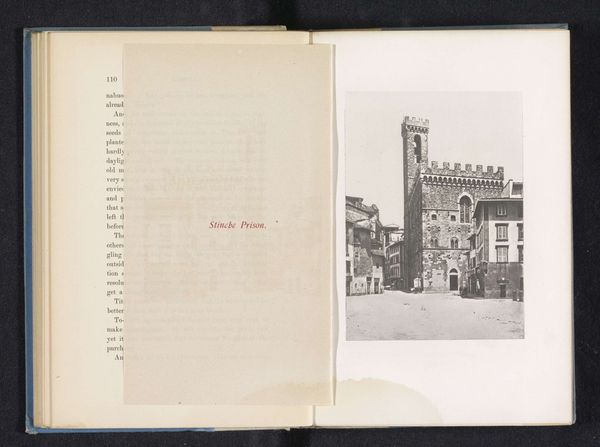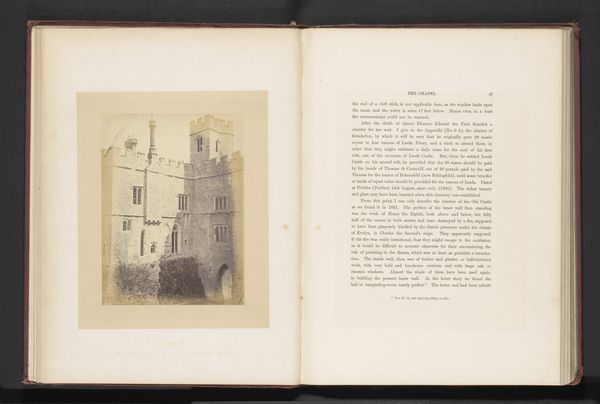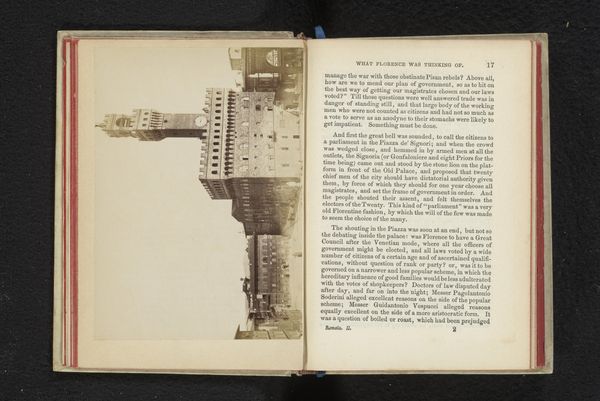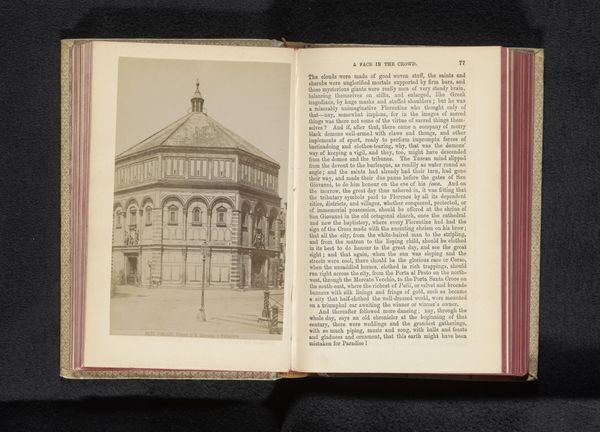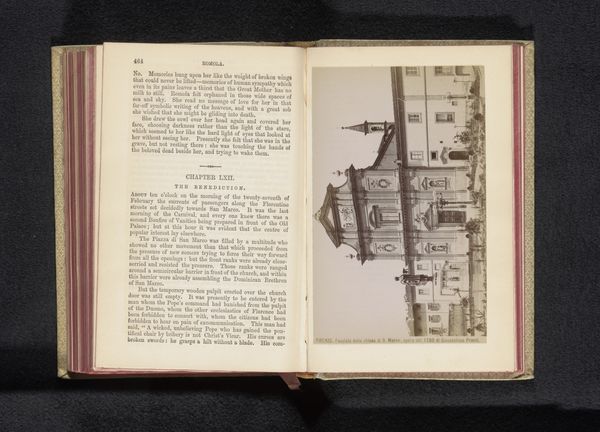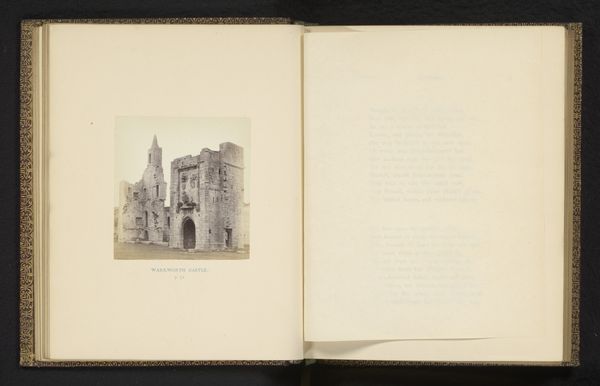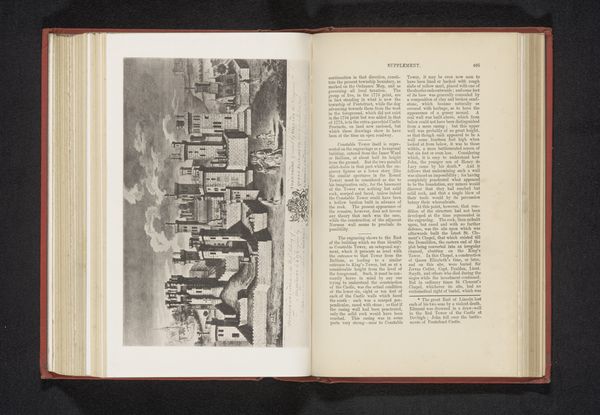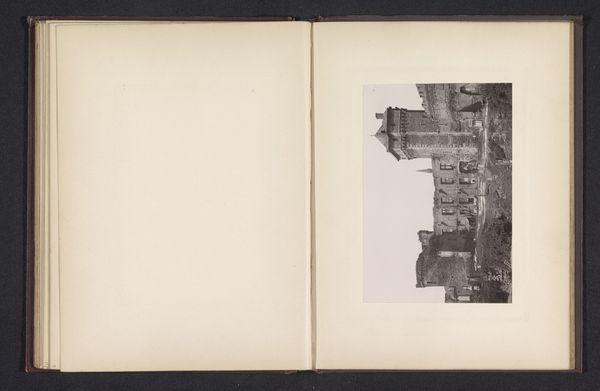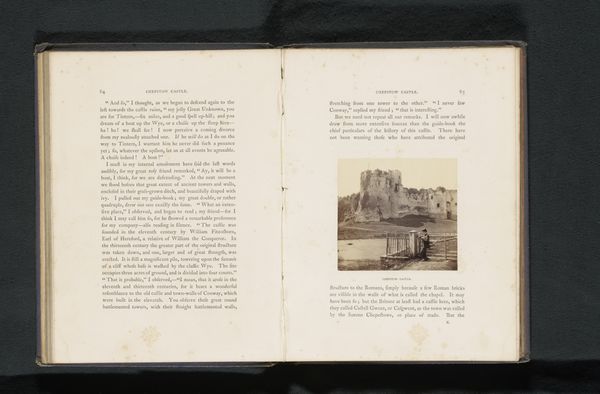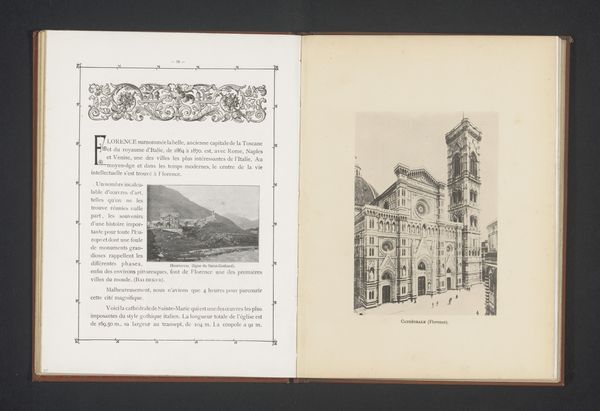
print, photography
# print
#
photography
#
cityscape
#
italian-renaissance
#
building
Dimensions: height 145 mm, width 93 mm
Copyright: Rijks Museum: Open Domain
Curator: This is a fascinating find—a photographic print entitled "Exterieur van het Palazzo del Podestà te Florence," taken before 1888 by Edizione Brogi. It’s presented within the pages of what looks to be a book. Editor: It certainly has a solemn air. The architectural massing feels monumental, austere. There is also this stark tonal contrast between the building and the openness of the Florentine square. Curator: Indeed. Brogi’s choice of medium—photography reproduced in print—is particularly interesting. It makes the city's physical reality accessible while engaging in mass consumption via printing techniques. Editor: From a formalist standpoint, the photograph's strength lies in its balance of light and shadow, which highlights the geometric perfection of the Palazzo. See how the lines draw your eye up the tower? The careful framing suggests a deeper intent beyond just documentation. Curator: Agreed. However, it is impossible to look beyond Brogi’s socioeconomic context. Printing images democratizes art, creating widespread representations of Renaissance ideals. Editor: Still, look at the Renaissance palazzo. Consider the symbolism: the imposing structure suggests permanence and stability. It acts as a potent signifier of civic power in Renaissance Florence. Curator: True, the work reproduces power but remember, photography and the printing process here allow a wider audience to view and discuss the symbolic impact. Brogi’s work participates in shaping a broader, more accessible Renaissance identity. Editor: So, the architectural geometry is meant to evoke order and clarity, classic values. Curator: Precisely, these historical printing techniques offer a perspective on 19th-century engagement with classical ideals in a period shaped by burgeoning consumerism. Editor: An interesting intersection. It also speaks volumes about the durability and influence of classical artistic visions. Curator: A perfect image for consideration, melding aesthetic, material production, and the spread of ideas.
Comments
No comments
Be the first to comment and join the conversation on the ultimate creative platform.
